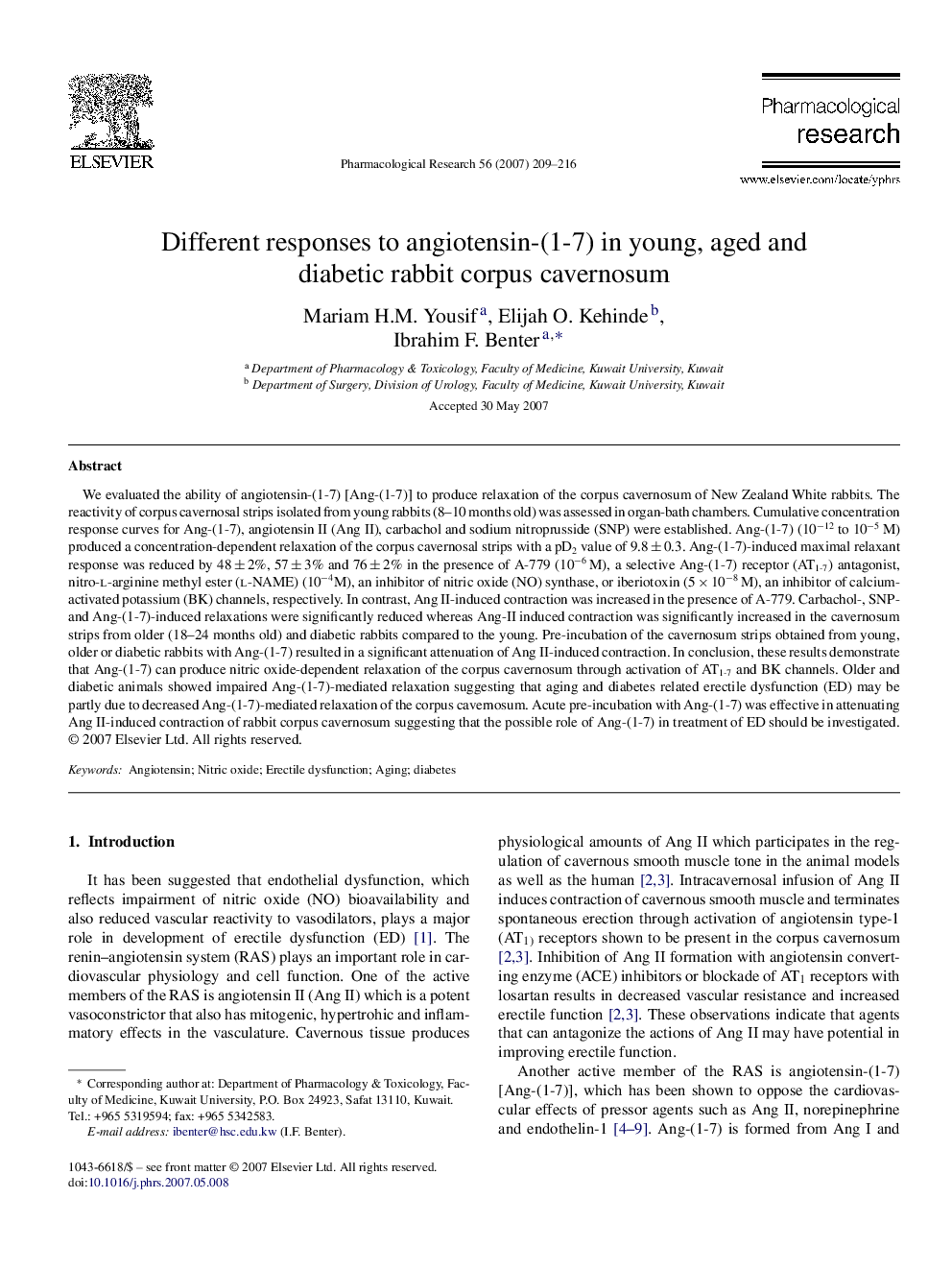| کد مقاله | کد نشریه | سال انتشار | مقاله انگلیسی | نسخه تمام متن |
|---|---|---|---|---|
| 2562950 | 1127327 | 2007 | 8 صفحه PDF | دانلود رایگان |

We evaluated the ability of angiotensin-(1-7) [Ang-(1-7)] to produce relaxation of the corpus cavernosum of New Zealand White rabbits. The reactivity of corpus cavernosal strips isolated from young rabbits (8–10 months old) was assessed in organ-bath chambers. Cumulative concentration response curves for Ang-(1-7), angiotensin II (Ang II), carbachol and sodium nitroprusside (SNP) were established. Ang-(1-7) (10−12 to 10−5 M) produced a concentration-dependent relaxation of the corpus cavernosal strips with a pD2 value of 9.8 ± 0.3. Ang-(1-7)-induced maximal relaxant response was reduced by 48 ± 2%, 57 ± 3% and 76 ± 2% in the presence of A-779 (10−6 M), a selective Ang-(1-7) receptor (AT1-7) antagonist, nitro-l-arginine methyl ester (l-NAME) (10−4M), an inhibitor of nitric oxide (NO) synthase, or iberiotoxin (5 × 10−8 M), an inhibitor of calcium-activated potassium (BK) channels, respectively. In contrast, Ang II-induced contraction was increased in the presence of A-779. Carbachol-, SNP- and Ang-(1-7)-induced relaxations were significantly reduced whereas Ang-II induced contraction was significantly increased in the cavernosum strips from older (18–24 months old) and diabetic rabbits compared to the young. Pre-incubation of the cavernosum strips obtained from young, older or diabetic rabbits with Ang-(1-7) resulted in a significant attenuation of Ang II-induced contraction. In conclusion, these results demonstrate that Ang-(1-7) can produce nitric oxide-dependent relaxation of the corpus cavernosum through activation of AT1-7 and BK channels. Older and diabetic animals showed impaired Ang-(1-7)-mediated relaxation suggesting that aging and diabetes related erectile dysfunction (ED) may be partly due to decreased Ang-(1-7)-mediated relaxation of the corpus cavernosum. Acute pre-incubation with Ang-(1-7) was effective in attenuating Ang II-induced contraction of rabbit corpus cavernosum suggesting that the possible role of Ang-(1-7) in treatment of ED should be investigated.
Journal: Pharmacological Research - Volume 56, Issue 3, September 2007, Pages 209–216